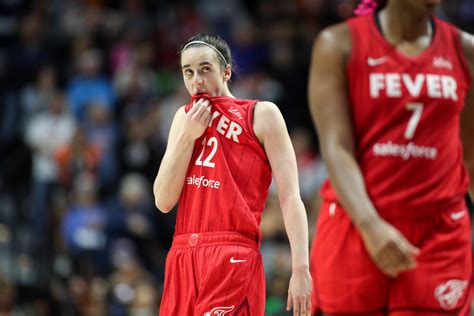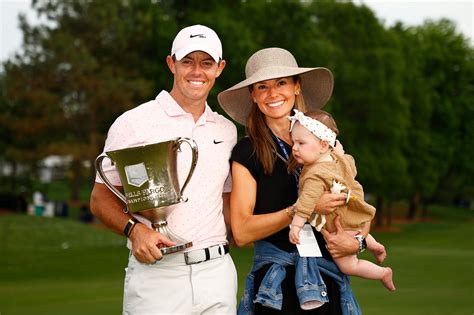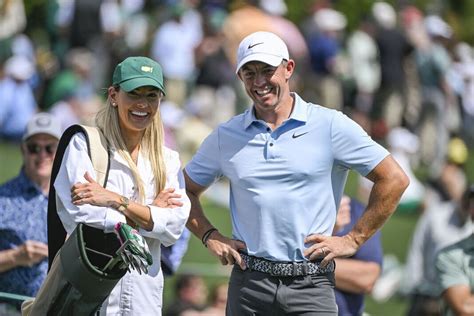
Caitlin Clark’s transition to the WNBA has sparked intense debate about whether she might eventually leave the league, with fans and experts offering diverging opinions amid discussions about her treatment, marketability, and the overall landscape of women’s basketball.
The intense scrutiny surrounding Caitlin Clark’s early WNBA career has ignited discussions about her long-term future in the league. While Clark’s immense popularity has undeniably boosted the WNBA’s profile, her on-court performance and the physical treatment she has received from opposing players have raised concerns among fans and analysts. Some observers believe that the pressure and challenges Clark faces could lead her to consider options outside the WNBA, while others argue that her competitive spirit and commitment to the sport will keep her firmly rooted in the league.
The debate gained momentum following a recent game where Clark was on the receiving end of a hard foul, which led to widespread condemnation of the perceived excessive physicality in the WNBA. “People are talking about this, and they’re not just talking about it in women’s basketball circles,” noted Yahoo Sports columnist Dan Wetzel. “They’re talking about it everywhere.” The incident has amplified existing concerns about whether Clark is being unfairly targeted and whether the league is adequately protecting its star player.
Adding fuel to the fire is the significant disparity in pay and endorsement opportunities between the WNBA and other professional leagues, particularly overseas leagues. Some analysts suggest that Clark could potentially earn significantly more money by playing abroad during the WNBA offseason or even making a permanent move to a foreign league. This economic reality, coupled with the physical toll of the WNBA season, could make leaving the league an attractive option for Clark in the future.
However, many fans and experts remain optimistic that Clark will remain in the WNBA and continue to contribute to the league’s growth. They argue that Clark is a fierce competitor who thrives under pressure and that she is deeply committed to elevating the WNBA’s profile. Her record-breaking college career and her immediate impact on the league’s popularity suggest that she is determined to succeed in the WNBA, regardless of the challenges she faces.
The Physicality Debate:
One of the primary concerns surrounding Clark’s WNBA career is the physicality of the league and whether she is being unfairly targeted by opposing players. The hard foul she recently endured has become a focal point in this debate, with many fans and analysts arguing that the league needs to do more to protect its star players.
“There’s growing push to preserve Caitlin Clark,” Wetzel wrote. “And it’s not just coming from the cheap seats on the internet. Reasonable basketball observers are wondering whether Clark will want any of this.” The concern is that the constant physical pressure and the perception of unfair treatment could eventually wear down Clark and lead her to question her future in the league.
Some argue that the increased physicality is simply a natural part of professional basketball, where players are more experienced and competitive than in college. They contend that Clark needs to adjust to the higher level of play and learn how to protect herself on the court. Others, however, believe that the physicality directed at Clark crosses the line and amounts to intentional targeting.
The debate over physicality has also raised broader questions about the WNBA’s officiating and whether referees are adequately enforcing the rules. Some critics argue that the league’s referees are hesitant to call fouls on veteran players, which allows them to get away with excessive physicality against younger players like Clark. This perception of uneven officiating has further fueled the controversy and intensified the pressure on the league to address the issue.
The Financial Factor:
Another key consideration in the discussion about Clark’s potential WNBA exit is the financial aspect. WNBA players earn significantly less than their counterparts in the NBA, and endorsement opportunities are also more limited. This financial disparity could make playing overseas an attractive option for Clark, particularly during the WNBA offseason.
“The money overseas is very real,” Wetzel noted. “And for a player of Clark’s caliber, it could be substantial.” Many WNBA players supplement their income by playing in foreign leagues during the offseason, where they can earn significantly more money. For a player like Clark, who has a global following and immense marketability, the financial incentives to play overseas could be even greater.
Some analysts have suggested that Clark could potentially earn millions of dollars by playing in a foreign league during the WNBA offseason. This additional income could provide her with financial security and allow her to pursue other interests outside of basketball. The prospect of earning significantly more money could also make a permanent move to a foreign league more appealing, particularly if she becomes disillusioned with the WNBA due to the physical demands or other challenges.
However, it’s also important to consider the endorsement opportunities that Clark has already secured in the WNBA. She has signed lucrative deals with major brands like Nike, Gatorade, and State Farm, which could provide her with a substantial income stream regardless of where she plays basketball. The WNBA’s growing popularity and Clark’s central role in that growth could also lead to even more endorsement opportunities in the future, making it financially advantageous for her to remain in the league.
The Marketability and Endorsement Landscape:
Caitlin Clark’s marketability and endorsement potential are undeniable. She has captivated audiences with her exceptional talent and charismatic personality, making her a highly sought-after endorser for major brands. Her arrival in the WNBA has already had a significant impact on the league’s popularity and revenue, attracting new fans and sponsors.
“Clark is a marketing dream,” Wetzel stated. “She has the potential to transcend the sport and become a household name.” Her appeal extends beyond basketball fans, attracting a wider audience that is drawn to her story and her accomplishments. This broad appeal makes her an ideal endorser for brands that are looking to reach a diverse range of consumers.
However, the endorsement landscape in the WNBA is still evolving. While Clark has secured lucrative deals with major brands, other WNBA players may not have the same opportunities. This disparity in endorsement income could contribute to the financial challenges that some WNBA players face and make playing overseas more attractive for those who are not able to secure significant endorsement deals.
The WNBA is working to improve the endorsement landscape for its players. The league has partnered with several major brands to create more marketing opportunities for its athletes. The WNBA is also actively promoting its players through social media and other channels, helping them to build their personal brands and attract endorsement deals.
The Competitive Drive and Legacy:
Despite the challenges and concerns surrounding her WNBA career, many believe that Caitlin Clark’s competitive drive and desire to build a lasting legacy will keep her in the league. She has demonstrated throughout her career that she thrives under pressure and that she is determined to succeed against all odds.
“Clark is a fierce competitor,” Wetzel wrote. “She has a burning desire to win and to prove herself against the best players in the world.” Her record-breaking college career and her immediate impact on the WNBA suggest that she is not afraid of challenges and that she is committed to reaching her full potential.
Clark has also spoken publicly about her desire to elevate the WNBA’s profile and to inspire the next generation of female basketball players. She understands the importance of her role in the league and the impact that she can have on young girls who dream of playing professional basketball. This sense of responsibility and her commitment to the WNBA’s growth could be a powerful motivator for her to remain in the league, regardless of the challenges she faces.
Building a legacy in the WNBA is also a significant factor for Clark. She has the opportunity to become one of the greatest players in league history and to leave a lasting mark on the sport. This opportunity could be more appealing to her than the financial incentives of playing overseas, particularly if she is committed to growing the game of women’s basketball in the United States.
The Broader Context of Women’s Basketball:
The discussion about Caitlin Clark’s future in the WNBA also needs to be considered within the broader context of women’s basketball. The sport has made significant strides in recent years, with increased viewership, attendance, and media coverage. However, there are still challenges that need to be addressed in order to ensure the long-term growth and sustainability of women’s basketball.
One of the biggest challenges is the financial disparity between the WNBA and the NBA. WNBA players earn significantly less than their NBA counterparts, which can make it difficult for them to support themselves and their families. This financial disparity also contributes to the perception that women’s basketball is not as valued as men’s basketball.
Another challenge is the lack of media coverage for women’s basketball. While there has been an increase in media coverage in recent years, it is still significantly less than the coverage given to men’s basketball. This lack of media coverage makes it difficult for women’s basketball players to build their personal brands and attract endorsement deals.
The WNBA is working to address these challenges and to create a more sustainable and equitable environment for its players. The league has implemented new collective bargaining agreements that have increased player salaries and benefits. The WNBA is also actively promoting its players through social media and other channels, helping them to build their personal brands and attract endorsement deals.
Conclusion:
The question of whether Caitlin Clark will eventually leave the WNBA is complex and multifaceted. There are valid arguments on both sides of the issue, and it is impossible to predict with certainty what the future holds. The physicality of the league, the financial incentives of playing overseas, and the endorsement landscape are all factors that could influence Clark’s decision.
However, it is also important to consider Clark’s competitive drive, her desire to build a lasting legacy, and her commitment to growing the game of women’s basketball. These factors could outweigh the challenges and make her more likely to remain in the WNBA and continue to contribute to the league’s growth.
Ultimately, the decision of whether to stay in the WNBA or pursue other opportunities will be up to Caitlin Clark. She will need to weigh the pros and cons of each option and make a decision that is in her best interests. Regardless of what she decides, her impact on the WNBA and women’s basketball will be felt for years to come. Her presence has already elevated the league’s profile and attracted new fans, and her legacy will continue to inspire young girls who dream of playing professional basketball. The coming years will undoubtedly be pivotal in shaping her career and solidifying her place in basketball history.
Frequently Asked Questions (FAQ):
1. Why is there speculation about Caitlin Clark potentially leaving the WNBA?
Speculation arises due to concerns about the intense physicality she faces, the financial disparity between the WNBA and overseas leagues, and the pressure of constant scrutiny. Some analysts believe that these factors could make her consider options outside the WNBA, where she might earn more money and face less physical strain.
2. How much more money could Caitlin Clark potentially earn by playing overseas?
While the exact amount varies, some analysts suggest that Clark could earn millions of dollars playing in a foreign league during the WNBA offseason. This supplemental income could provide financial security and potentially influence her long-term career decisions.
3. Is Caitlin Clark being unfairly targeted with excessive physicality in the WNBA?
This is a subject of debate. Some argue that the increased physicality is a normal part of professional basketball, while others believe that Clark is being intentionally targeted. The hard foul she recently endured has fueled this debate, with many calling for the league to better protect its star players.
4. What are the potential benefits of Caitlin Clark staying in the WNBA?
Staying in the WNBA allows Clark to build a lasting legacy, elevate the league’s profile, and inspire the next generation of female basketball players. She also has lucrative endorsement deals that could continue to grow as the WNBA’s popularity increases. Furthermore, her competitive spirit and desire to prove herself against the best could motivate her to remain in the league.
5. How is the WNBA addressing the concerns about player salaries and endorsement opportunities?
The WNBA has implemented new collective bargaining agreements that have increased player salaries and benefits. The league is also actively promoting its players through social media and other channels to help them build their personal brands and attract endorsement deals. Additionally, the league is partnering with major brands to create more marketing opportunities for its athletes.
6. What impact has Caitlin Clark had on the WNBA’s popularity?
Clark’s arrival in the WNBA has had a significant impact on the league’s popularity. She has attracted new fans, increased viewership, and boosted revenue. Her presence has generated excitement and interest in the WNBA, contributing to its growth and visibility.
7. Are there other WNBA players who play overseas during the offseason?
Yes, many WNBA players supplement their income by playing in foreign leagues during the offseason. This allows them to earn significantly more money and continue playing basketball year-round. Playing overseas is a common practice among WNBA players, particularly those who are not able to secure lucrative endorsement deals.
8. How do endorsement deals impact a WNBA player’s overall earnings?
Endorsement deals can significantly increase a WNBA player’s overall earnings. Lucrative deals with major brands can provide a substantial income stream, supplementing their WNBA salary. Endorsement opportunities are particularly important for players who are not able to earn as much money playing overseas.
9. What role do WNBA referees play in protecting players from excessive physicality?
WNBA referees are responsible for enforcing the rules of the game and protecting players from excessive physicality. Some critics argue that the league’s referees are hesitant to call fouls on veteran players, which allows them to get away with excessive physicality against younger players like Clark. This perception of uneven officiating has fueled the controversy and intensified the pressure on the league to address the issue.
10. How does the competitive environment of the WNBA compare to other professional leagues?
The WNBA is a highly competitive league with many talented and experienced players. The level of play is very high, and players are constantly pushing themselves to improve. The competitive environment can be challenging for young players like Clark, who are adjusting to the higher level of play and the increased physicality.
11. What is the WNBA doing to support its players both on and off the court?
The WNBA provides a range of support services for its players, including financial planning, career counseling, and mental health resources. The league is also working to create a more inclusive and supportive environment for its players, addressing issues such as gender equality and social justice.
12. How might fan support influence Caitlin Clark’s decision about staying in the WNBA?
Strong fan support could positively influence Clark’s decision to stay in the WNBA. The enthusiasm and encouragement of fans can create a sense of belonging and motivate her to continue playing in the league. Conversely, negative fan interactions or a perceived lack of support could contribute to her considering other options.
13. What are the long-term implications for the WNBA if Caitlin Clark were to leave the league?
If Clark were to leave the WNBA, it could have negative implications for the league’s popularity and revenue. Her departure could lead to a decrease in viewership, attendance, and media coverage. However, the WNBA has a number of other talented players who could step up and fill the void, ensuring the league’s continued success.
14. How does the media coverage of the WNBA impact the players and the league’s growth?
Media coverage plays a crucial role in shaping public perception and driving interest in the WNBA. Increased media coverage can help to build the personal brands of WNBA players, attract endorsement deals, and boost the league’s overall popularity. A lack of media coverage can hinder the league’s growth and make it difficult for players to gain recognition.
15. What are some of the unique challenges that female athletes face compared to their male counterparts?
Female athletes often face unique challenges, including gender bias, pay inequality, and limited media coverage. They may also encounter greater scrutiny and criticism, particularly regarding their appearance and personal lives. These challenges can make it more difficult for female athletes to succeed and to achieve their full potential.
16. How can fans and supporters help to create a more equitable and supportive environment for WNBA players?
Fans and supporters can help by attending games, watching WNBA broadcasts, and engaging with the league and its players on social media. They can also advocate for equal pay, increased media coverage, and greater opportunities for female athletes. By showing their support, fans can help to create a more equitable and supportive environment for WNBA players and contribute to the growth of women’s basketball.
17. What are some of the potential changes that could improve the WNBA experience for both players and fans?
Potential changes include increasing player salaries, improving officiating, expanding media coverage, and enhancing the fan experience at games. Implementing these changes could make the WNBA more attractive to both players and fans, contributing to the league’s long-term success.
18. How does the WNBA compare to other professional women’s sports leagues in terms of popularity and financial success?
The WNBA is one of the most successful professional women’s sports leagues in the world. It has a growing fan base, increasing revenue, and a number of talented and recognizable players. However, it still lags behind some other professional sports leagues, both male and female, in terms of popularity and financial success.
19. What advice would you give to young girls who dream of playing professional basketball?
The advice would be to work hard, stay focused, and never give up on their dreams. They should also seek out mentors and role models who can provide guidance and support. By developing their skills, building their confidence, and staying committed to their goals, they can increase their chances of achieving their dreams of playing professional basketball.
20. How has social media impacted the careers of WNBA players like Caitlin Clark?
Social media has significantly impacted the careers of WNBA players like Clark. It has allowed them to connect directly with fans, build their personal brands, and attract endorsement deals. Social media has also provided a platform for players to speak out on social issues and advocate for change. However, social media can also be a source of negativity and criticism, requiring players to develop strategies for managing their online presence and protecting their mental health.
21. Beyond salary, what other benefits do WNBA players receive?
WNBA players receive benefits such as health insurance, retirement plans, housing assistance, and travel accommodations. The league also provides access to resources for career development, financial planning, and mental health support. These benefits are designed to support players both on and off the court and to help them build successful and sustainable careers.
22. How do WNBA teams work to scout and develop talent, both domestically and internationally?
WNBA teams scout talent through various methods, including attending college games, evaluating game film, and participating in international tournaments. Teams also hold tryouts and conduct individual workouts to assess players’ skills and potential. Development programs focus on enhancing players’ skills, improving their physical conditioning, and preparing them for the demands of professional basketball.
23. What are the current challenges facing the WNBA in terms of expanding its global reach?
Expanding the WNBA’s global reach faces challenges such as limited international broadcasting, varying levels of interest in women’s basketball across different countries, and competition from other professional sports leagues. The league is working to overcome these challenges by partnering with international organizations, increasing its social media presence, and promoting its players globally.
24. In what ways does the WNBA contribute to the broader community and social causes?
The WNBA contributes to the broader community through various initiatives, including youth basketball programs, charitable partnerships, and social justice advocacy. Players and teams often participate in community events, support local organizations, and use their platforms to raise awareness about important social issues. The WNBA’s commitment to social responsibility reflects its values and its desire to make a positive impact on society.
25. What is the future outlook for women’s basketball, both in the WNBA and at the collegiate level?
The future outlook for women’s basketball is bright, with growing popularity, increasing media coverage, and a new generation of talented players emerging at both the WNBA and collegiate levels. The WNBA is poised for continued growth, driven by its commitment to innovation, its focus on player development, and its efforts to expand its global reach. The collegiate game is also thriving, with increased viewership and a growing fan base, setting the stage for a bright future for women’s basketball as a whole.









